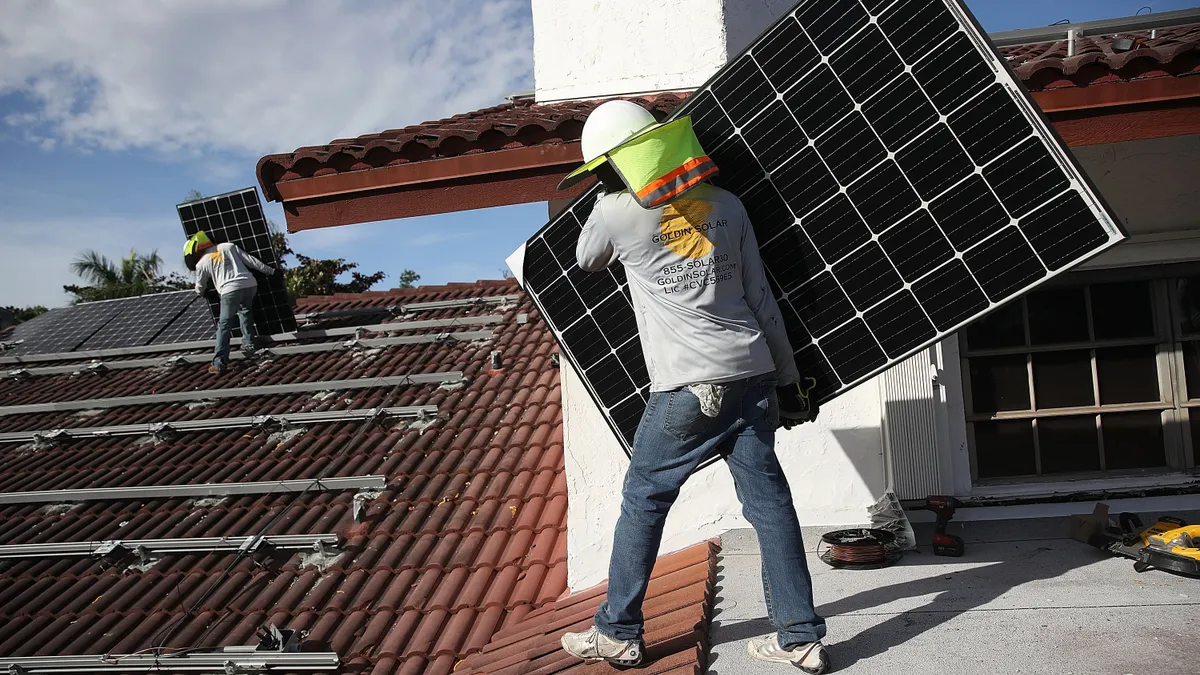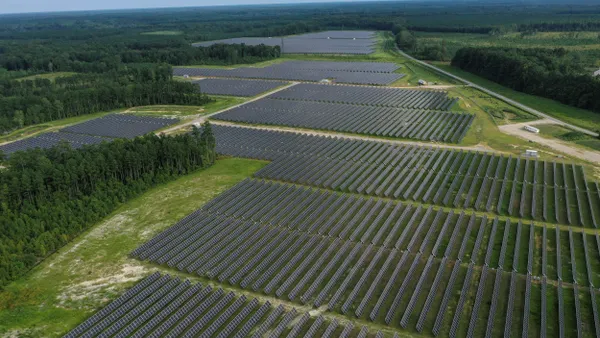Dive Brief:
-
Roughly one-third of households that installed residential solar in 2021 had incomes in the range of $50,000 to $100,000, according to a new report from the Lawrence Berkeley National Laboratory. The median income household for a 2021 installation was $110,000, compared with $129,000 in 2010.
-
Demographic trends in residential installations primarily reflect trends in California, the site of roughly half of all installations in 2021, according to the report’s authors. Nearly one-third of California’s new solar installations were at households that earned less than the state’s 2021 median income of $81,575.
-
The expansion of residential solar adoption in middle- and lower-income states like Texas and Florida has helped close the national income gap, according to the Berkeley Lab data, but Texas saw solar installations by lower-income households drop in 2021.
Dive Insight:
Access to rooftop solar appears to be growing more equitable as time goes on, but progress remains gradual and uneven across states, according to the latest data from the Berkeley Lab.
The average household installing rooftop solar in 2021 had a median income ranging from 131% to 168% of the median income of its county, according to data released on Nov. 1. Nationwide, the median income of a solar adopter household was about $110,000 in 2021, compared with a U.S. median income of $63,000 for all households.
Households with residential solar are also more likely to be non-Hispanic White, primarily English speaking, better educated and work in business or finance-related fields, according to the Berkeley Lab’s demographic data.
Data on residential energy storage remains limited, but it appears to follow some of the same trends, with higher-income households installing batteries at a more rapid pace so far, according to Lawrence Berkeley National Laboratory Scientific Engineering Associate Sydney Forrester.
Most of these figures reflect demographic trends in California, which remains the nation’s largest market for residential solar, according to Galen Barbose, a research scientist at the Berkeley Lab. But growth in Texas and Florida has helped to increase the number of middle-income installations in the U.S., in addition to a trend in California toward more installations by middle- and low-income households. Forty percent of new solar adopters in Texas had income below their county’s median level, and 37% of new installations in Florida met the same benchmark.
Both Texas and Florida have seen a higher rate of solar adoption among the lowest-income households (those making 60% or less of their area median income) compared with middle-income households. In Texas, some 17% of solar adopters made less than 60% of the median income, compared with 11% in the 80% to100% median income range. And this figure is down from its peak in 2020, when nearly 18% of Texas residential solar installations went to households making less than 60% of the median income.
However, the states with the highest rates of low-income solar installations were Louisiana and Pennsylvania. Nearly a quarter of 2021 solar adopter households in both states made less than 60% of their area median income.
While the Berkeley lab data does not identify specific drivers of the income gap in rooftop solar adoption, Barbose said it seems likely that the decreasing cost of solar, coupled with the increased ease of financing, have likely contributed to growing adoption among lower-income households.














